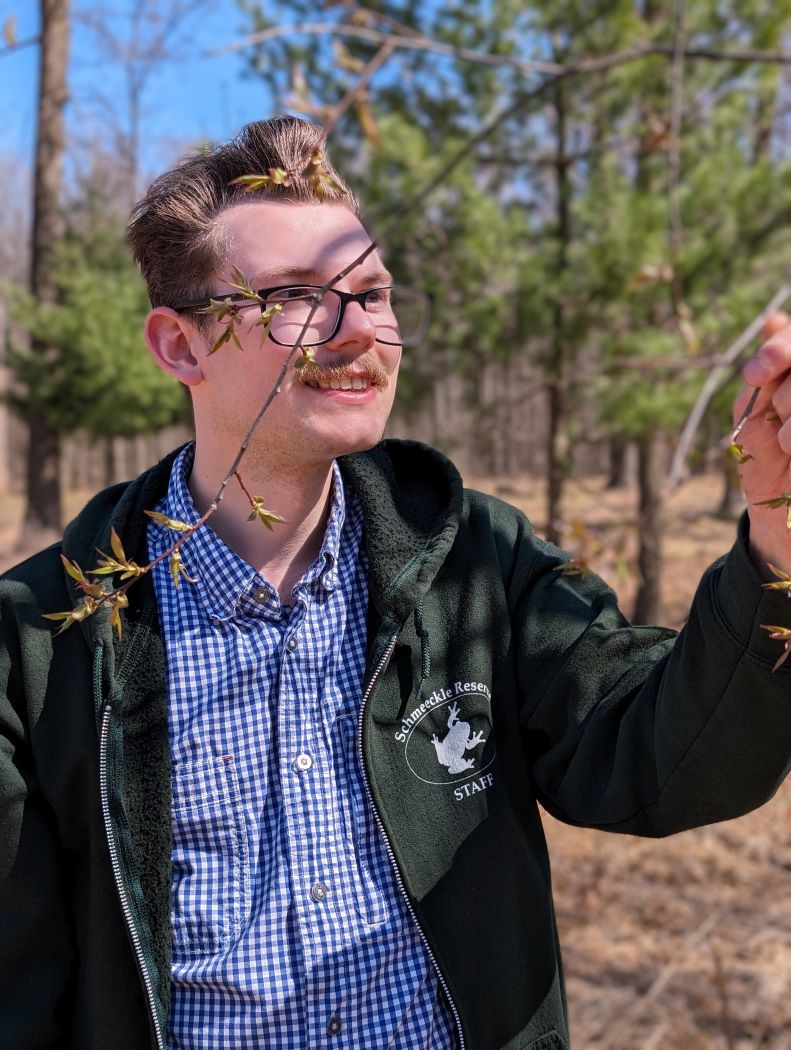by Barbara Dixson
In the last full week in April, I requested the expertise of Griffin Bray, Schmeeckle’s grad assistant of the last two years, to help me understand what I was seeing as I wandered near the Visitor Center. In the photo above, Griffin points out the little cones of buds on the black cherries, cones that will turn into tasty strands of cherries. Griffin, who knows way more than he ever lets on about everything natural, graciously explained matters ranging from how plants have been used to how each plant got to where it is in the Reserve.
Griffin reminded me to keep an eye out in the days ahead, as very soon, trillium, jack-in-the-pulpit, and wild ginger will emerge. Already, he told me, the white throated sparrows are back, the mourning doves are skirmishing over territory and clashing over mates, and the male red-bellied woodpecker is marking his perimeter with territorial calls.

Bloodroot is one of the first spring flowers. They’ve been used for dye or medicine, with necrotic properties–that is, they can burn things off, like warts. We have many blossoms just now in the raised garden by the Visitor Center front door.
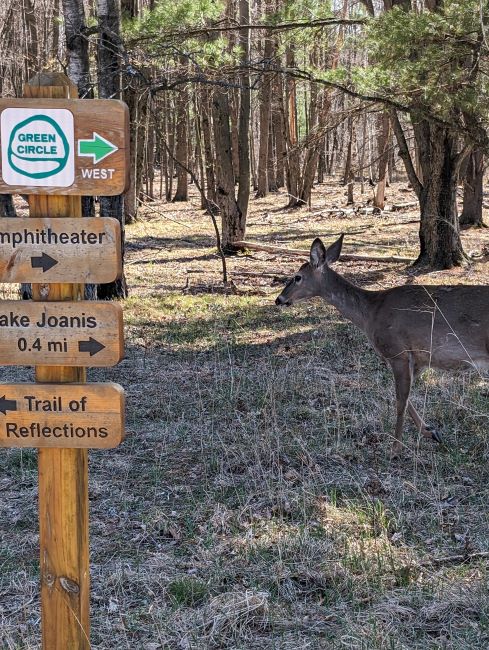
Deer, intrepid in the safety of the Reserve, are wearing their summer coats.

I was surprised to hear that these daffodils are volunteers left from the days when there was a big compost pile behind what is now the amphitheater stage.

While the flowers are cautiously approaching spring, the grasses, sedges, and rushes are flinging themselves into the light. This clump of Pennsylvania sedge grows in shade near the Visitor Center.
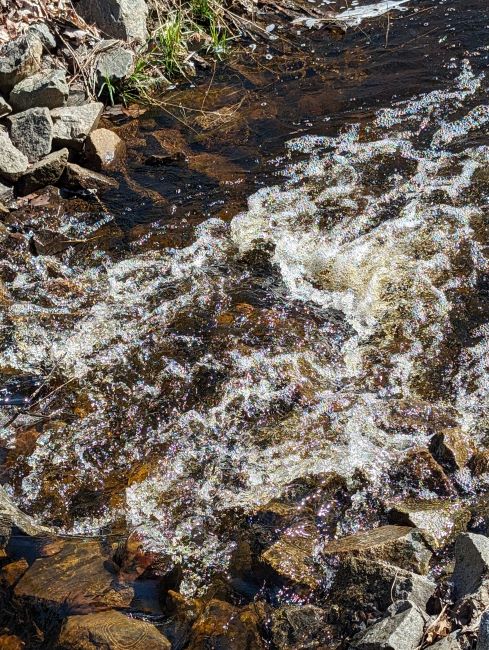
After studying the plants near the Visitor Center, I got on my bike and headed over to Moses Creek, with its spring fullness.
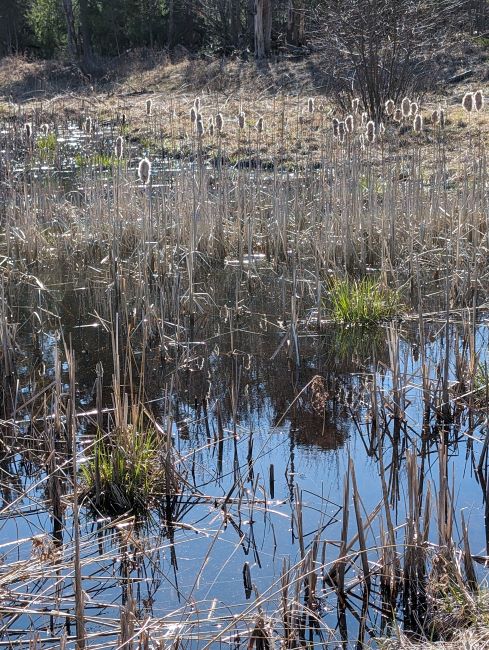
The wetlands around Moses Creek are also full, just as the wetland restoration plan intended.
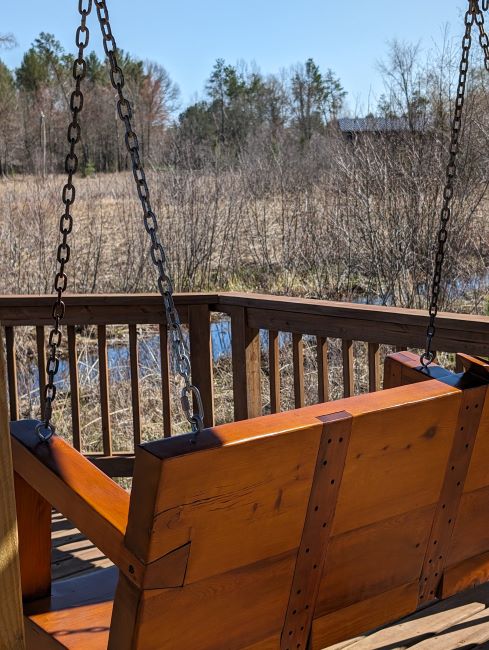
If you would like to pause and contemplate the fullness of life in the spring, the wetland overlook swing offers the ideal spot.
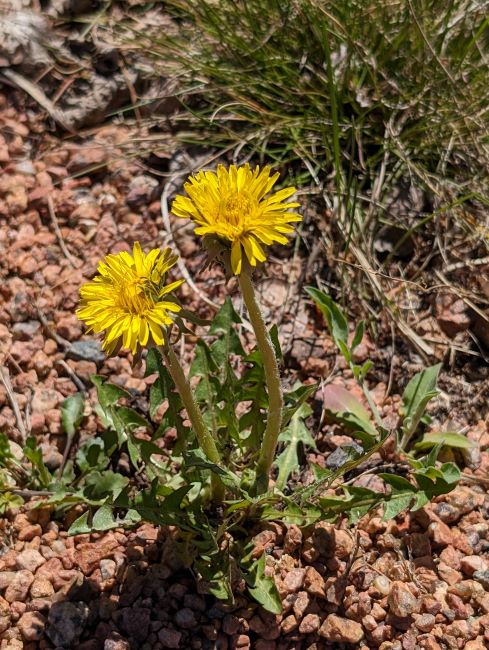
Dandelions grow happily even in gravel on the trail.
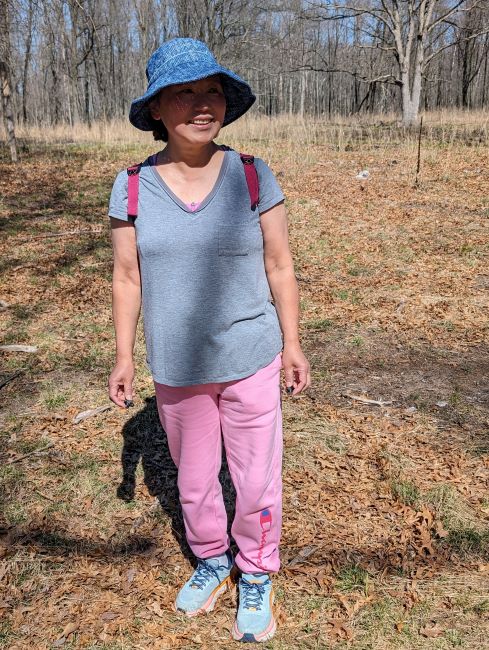
One of the surest signs of spring! People on the trails in spring clothes. Chuy paused in her walk to give us a cheerful greeting.
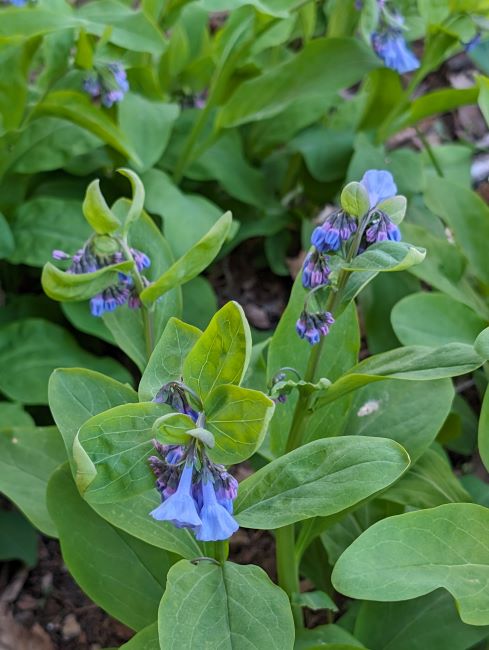
Virginia bluebells blossom to the right of the Visitor Center front door. The buds open at different times, so that we’ll have a good week of purple beauty.

Canada wild rye was put in as a cover crop when the oak savanna was established. It makes an excellent starting point, as it fades and gives way to diverse species.
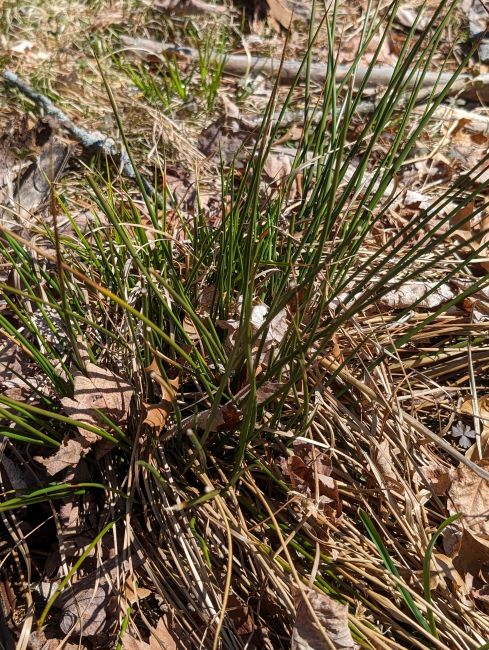
These rushes grow in a wet area and have been browsed by deer. Griffin was able to refresh my memory on the clean version of the old rhyme: “Sedges have edges, rushes are round, grasses have nodes from the tip to the ground.”

Spring sunlight glints off the water.
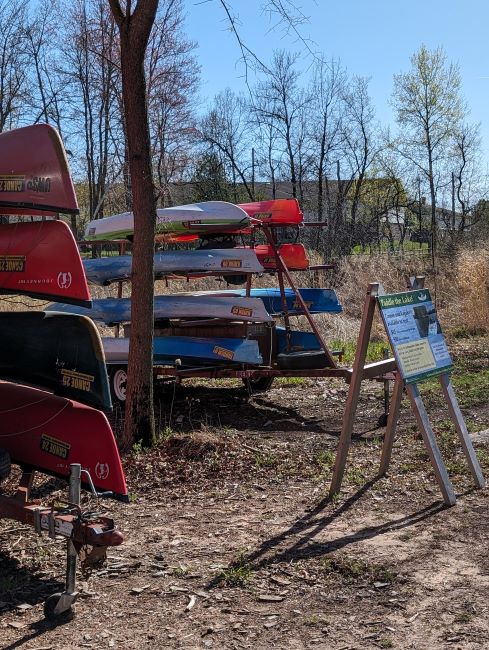
If you’d rather be on water than trails, the kayaks and canoes are out and ready to go.
